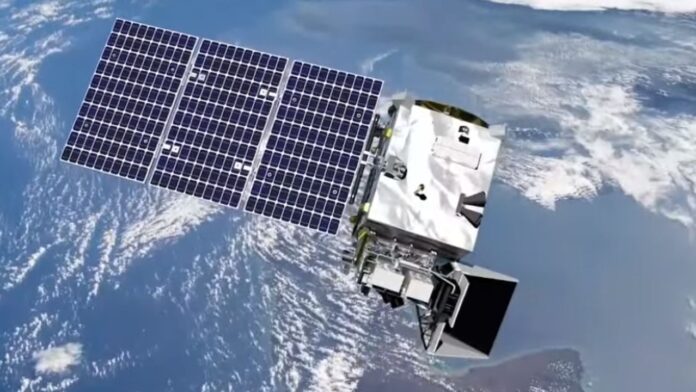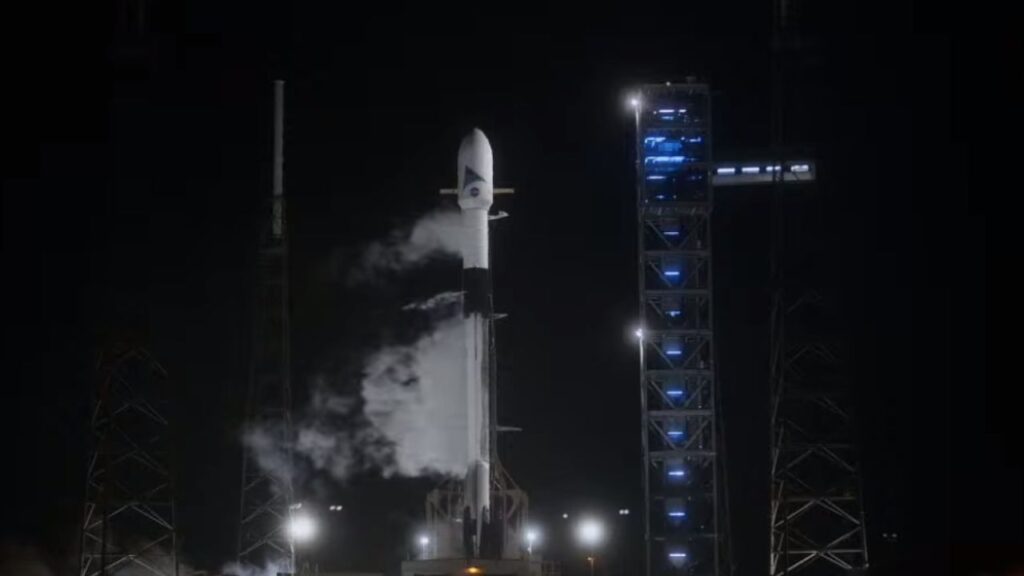A groundbreaking satellite has been successfully launched, offering an unparalleled view of Earth’s microscopic marine life and minuscule atmospheric particles.
The NASA PACE mission successfully launched at 1:33 a.m. ET Thursday aboard a SpaceX Falcon 9 rocket from Cape Canaveral Space Force Station in Florida. The rocket’s booster flawlessly returned to Earth approximately 10 minutes following liftoff. Approximately 30 minutes after launch, the team successfully verified that the spacecraft’s solar arrays had been deployed and it was now receiving power.
The launch, originally scheduled for Tuesday morning, experienced two delays caused by unfavorable weather conditions, including high winds and cumulus clouds. However, the weather conditions on Thursday morning were extremely favorable for launch, with a probability of over 95%.
According to Jeremy Werdell, the PACE project scientist, scientists started developing a method to gain a deeper understanding of how the Earth is influenced by oceanic and atmospheric processes approximately two decades ago.
The mission aims to provide valuable insights into the role of aerosols, clouds, and phytoplankton in the ocean. These factors play a crucial role in indicating the health of our oceans and the impact of global warming. The three instruments aboard PACE, including two polarimeters and one camera, will capture a wide range of data across various wavelengths of light, enabling us to observe phenomena that were previously unseen,” stated Karen St. Germain, director of NASA’s Earth Science Division.
“Our work with PACE involves exploring the hidden, minuscule world that exists in the ocean, the atmosphere, and, to some extent, on land,” Werdell explained.
Even though it was originally planned for a three-year mission, PACE has sufficient fuel to continue orbiting and studying Earth for a maximum of 10 years. The spacecraft will be part of a large group of NASA Earth science missions that orbit our planet, collecting data on oceans, land, ice, and the atmosphere. This data will help us gain a better understanding of how Earth’s climate is evolving.
Missions like PACE and the international Surface Water and Ocean Topography mission, known as SWOT, that launched in 2022 have the potential to revolutionize our understanding of Earth’s oceans.
We are unquestionably facing a climate crisis,” stated NASA Deputy Administrator Pam Melroy. Our planet is experiencing significant shifts due to the increase in severe weather events and destructive wildfires, as well as the gradual rise in sea levels. NASA is more than just a space and aeronautics agency. We are an agency focused on climate-related matters. We utilize the exceptional perspective of space to examine our planet as a whole, gathering crucial data on Earth’s science. This information is then accessible to individuals around the globe, enabling them to make well-informed decisions on how to protect our planet and its inhabitants for future generations.
Aerial Eyes on Earth’s Skies
According to Kate Calvin, chief scientist and senior climate advisor at NASA, January saw the announcement that 2023 was the hottest year on record. This is part of a larger trend of global temperatures warming over the past decade.
The warming is primarily caused by greenhouse gases such as carbon dioxide. Once it is released, carbon dioxide is absorbed by both land and oceans. However, a portion of it lingers in the atmosphere, creating a greenhouse effect that contributes to the warming of our planet.
PACE is an incredible mission that will enhance our knowledge of the carbon exchange between the ocean and the atmosphere,” Calvin expressed.
However, there are additional factors that contribute to warming, such as aerosol particles in the atmosphere that consist of pollutants, dust, smoke, and sea salt. According to Calvin, aerosols have the ability to reflect or absorb sunlight and can impact the formation of clouds.
Aerosols have a significant impact on Earth’s weather, air quality, and climate, according to St. Germain.
They come from various sources, such as dust blown off from Sahara wildfires and activities carried out by humans,” St. Germain explained. Cloud seeding can have significant impacts on weather patterns, including the potential for hurricanes to form. Additionally, clouds can play a role in reflecting the sun’s energy. They play a crucial role in maintaining the long-term stability of Earth’s climate.
According to Andy Sayer, an atmospheric scientist, the presence of aerosols in the atmosphere can have a negative impact on air quality, leading to chronic conditions such as asthma. By studying the composition and distribution of aerosols, scientists can identify areas with high levels of air pollution and issue more effective warnings.
The two polarimeter instruments on PACE will enable scientists to examine the particle size, composition, and quantity of aerosols in Earth’s atmosphere using a range of wavelengths. This will allow for a comprehensive understanding of the areas that are most affected by these problematic particles.
Mapping Microscopic Life from Space
Scientists are hopeful that PACE can provide valuable insights into the mysteries of Earth’s oceans, which cover about 70% of the planet’s surface. These vast bodies of water have always been a source of curiosity and continue to pose intriguing questions.
In many ways, our understanding of the moon’s surface surpasses our knowledge of the vast depths of our oceans,” St. Germain remarked. PACE is set to be our most cutting-edge mission yet, dedicated to the study of ocean biology. It will provide us with valuable insights into the oceans, just as Webb is expanding our understanding of the cosmos.
PACE will use its orbital perspective to search for the light reflected from phytoplankton, tiny organisms that thrive on the surface of Earth’s oceans. The Ocean Color Instrument is carried by the mission. Using over 100 different wavelengths of light, this groundbreaking mission will enable the study of phytoplankton on a global scale. By identifying various species, including those that may pose a threat to other life-forms, this mission will mark the first time such observations are made from space.
Phytoplankton are an essential component of the marine food web. According to NASA, the absence of these small organisms could lead to the collapse of the delicate web they are a part of, which would have dire consequences for global fisheries and ultimately for humans.
These microalgae utilize photosynthesis to absorb carbon dioxide and sunlight, producing oxygen and carbohydrates that provide nourishment for various marine organisms. Phytoplankton started photosynthesizing over 3 billion years ago, way before the existence of trees and plants. These tiny organisms have played a significant role in producing approximately 50% of the Earth’s oxygen, as stated by NASA.
Although phytoplankton are crucial in removing carbon dioxide from the Earth’s atmosphere, certain species can also have negative effects. Algal blooms play a crucial role in marine food webs, particularly in polar regions. However, certain blooms can pose a threat by producing harmful toxins that contaminate drinking water and cause disturbances in entire ecosystems. The observations from PACE can provide valuable insights for scientists to better comprehend the species responsible for toxic blooms, monitor their behavior over time, and devise effective prevention strategies.
PACE is a mission that aims to utilize the exceptional perspective of space to investigate the minute yet significant aspects of the oceans,” St. Germain expressed.
















![Technical Aspects of 844 Area Code in 2024 [Detail Guide] 844 Area Code](https://articleify.com/wp-content/uploads/2024/01/844-Area-Code-150x150.jpg)












